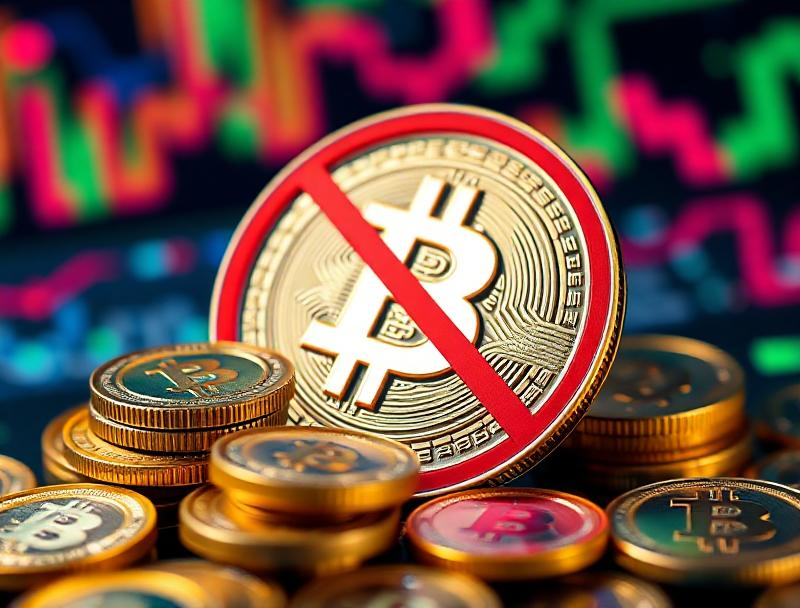Recognizing warning signs is the fastest way to stay safe when dealing with digital assets. Offers promising guaranteed returns or unsolicited messages urging urgent action often indicate deceit. Always question unexpected requests for private keys or personal information, as legitimate platforms never ask for these details directly.
Verifying authenticity can prevent costly mistakes. Check website URLs carefully–fraudsters frequently create lookalike domains with minor spelling differences. Cross-reference project teams and partnerships through official channels and reputable sources before engaging in any transaction.
Implementing basic protection measures reduces vulnerability significantly. Use hardware wallets and two-factor authentication to secure accounts. Avoid clicking on links from unknown emails or social media profiles, which are common vectors for malicious schemes targeting investors.
Understanding typical patterns of deception helps build awareness over time. Promises of fast profits without risk, pressure to invest quickly, and demands for upfront fees are classic indicators of fraudulent activity. Learning these red flags makes it easier to differentiate between genuine opportunities and traps.
Building safety habits around research and skepticism fosters long-term security. Regularly updating software, staying informed about recent threats, and consulting community feedback contribute to a more confident approach when handling cryptocurrencies.
How to avoid crypto scams easily
Protection begins with thorough verification of any platform or service requesting your funds. Always check for official licensing, transparent team information, and credible third-party audits. For example, reputable exchanges undergo regular security assessments and publish their results publicly, which helps users distinguish trustworthy entities from fraudulent ones.
Recognizing warning signs is essential to maintaining safety in cryptocurrency transactions. Typical red flags include unsolicited investment offers promising guaranteed returns, overly complex jargon designed to confuse newcomers, and pressure tactics urging immediate action. These indicators often signal attempts at deception rather than legitimate opportunities.
Key Measures to Ensure Security
Implementing multi-factor authentication (MFA) across wallets and exchange accounts significantly increases protection against unauthorized access. Hardware wallets provide an additional layer by storing private keys offline, minimizing exposure to hacking risks common in software-based wallets.
- Verify URLs carefully: Phishing sites often mimic legitimate platforms with subtle spelling variations.
- Use reputable sources: Rely on well-known aggregators and official announcements rather than random social media posts.
- Avoid sharing private keys or seed phrases: Legitimate services never request this information directly.
Monitoring transaction history regularly can reveal unusual activity early. For instance, unexpected outgoing transfers or login attempts from unfamiliar devices should trigger immediate account review and password updates. Some wallet applications offer real-time alerts, enhancing user awareness of suspicious behavior.
Education plays a pivotal role in recognizing deceptive schemes such as Ponzi structures or fake initial coin offerings (ICOs). Studying whitepapers critically–checking for verifiable technical details–and researching team backgrounds help distinguish genuine projects from opportunistic ventures. Engaging with community forums where experienced users share insights also contributes to informed decision-making.
The combination of proactive vigilance, practical security tools, and continuous learning equips individuals with effective methods for safeguarding assets. By understanding typical patterns used by fraudsters and applying these protective strategies consistently, users strengthen their defense against deceptive practices prevalent within the blockchain ecosystem.
Verify Project Legitimacy Fast
Begin by examining the project’s code repository, typically hosted on platforms like GitHub or GitLab. Authentic projects maintain active repositories with frequent commits, transparent issue tracking, and clear documentation. A stagnant or empty repository can be an indicator of poor development practices or intentional concealment, which reduces your protection against unreliable ventures.
Check for verifiable team information. Legitimate initiatives openly disclose their developers’ identities and professional backgrounds. Cross-reference these details on LinkedIn or other professional networks to confirm authenticity. Anonymous teams or unverifiable profiles often signal potential threats to safety and reliability.
Technical Indicators and Verification Methods
Analyze the smart contracts associated with the project. Use blockchain explorers such as Etherscan or BscScan to review contract addresses, transaction histories, and audit reports. Verified contracts usually undergo security audits by reputable firms; these audit results should be publicly accessible. Absence of an audit or presence of critical vulnerabilities in reports are red flags that demand caution.
Investigate tokenomics and distribution models presented by the project. Transparent projects provide detailed whitepapers explaining token supply limits, allocation percentages, vesting schedules, and mechanisms preventing inflationary abuses. Projects lacking clarity in these areas may expose investors to manipulation risks and reduced asset protection.
- Cross-check partnerships: Confirm announced collaborations through official partner channels rather than solely trusting project announcements.
- Assess community engagement: Active user discussions across forums like Reddit or Telegram indicate genuine interest but also monitor for scripted responses or spam-like behavior.
A practical example includes reviewing a DeFi protocol’s smart contract address on Etherscan before interacting with its platform. If the contract is verified and displays consistent transaction patterns without suspicious minting activity, it enhances confidence in operational integrity. Additionally, reading third-party audit summaries provides insights into potential exploit vectors previously identified.
The process described builds a solid foundation for recognizing warning signs swiftly while fostering confidence in project safety measures. This approach empowers users to make informed decisions grounded in verifiable evidence rather than relying solely on promotional materials or superficial impressions.
Secure Your Wallet Properly
Start by selecting a wallet that provides robust protection measures such as hardware encryption and multi-factor authentication. Hardware wallets store private keys offline, significantly reducing exposure to hacking attempts. For example, devices like Ledger or Trezor utilize secure elements designed to resist physical tampering and malware attacks. This approach enhances your safety by isolating critical credentials from internet-connected environments, which are common targets for malicious actors.
Next, implement strong backup protocols for your wallet’s seed phrase or private keys. Store these backups in multiple secure locations, preferably offline in fireproof safes or safety deposit boxes. Avoid digital copies on cloud services or email accounts, as these vectors have been exploited in numerous theft cases documented by cybersecurity firms. This redundancy ensures recovery options remain intact even if one copy is compromised or lost.
Additional Steps to Strengthen Wallet Security
Beware of phishing attempts disguised as legitimate wallet software updates or support communications. Always verify the source by cross-checking URLs and official channels before entering sensitive information. Installing wallet applications exclusively from official repositories minimizes the risk of downloading counterfeit software engineered to steal funds.
An effective way to enhance long-term security involves regularly updating your wallet firmware and software to patch vulnerabilities revealed through ongoing research. Ignoring updates can leave known exploits unaddressed, increasing susceptibility to unauthorized access. Combining this with cautious use of public Wi-Fi networks–preferably avoiding them during transactions–further reduces interception risks.
Recognize phishing attempts clearly
Always verify the authenticity of any message requesting sensitive information before responding. Cybercriminals frequently use phishing techniques to trick users into revealing private keys, passwords, or seed phrases by impersonating trusted platforms or contacts. One clear warning sign is unexpected communication urging immediate action, often accompanied by threats of account suspension or loss of funds.
Protection starts with scrutinizing URLs and email addresses for subtle misspellings or unusual domain extensions that mimic legitimate services. For example, a fraudulent site might replace “.com” with “.net” or add extra characters that are easy to overlook at first glance. Utilizing browser extensions designed to detect malicious sites can add an additional security layer.
Common signs indicating phishing attacks
- Unsolicited requests: Legitimate organizations rarely ask for private credentials via email or direct messages.
- Poor grammar and spelling errors: Many phishing messages contain language mistakes not typical for professional companies.
- Urgency and pressure tactics: Scammers often create a false sense of urgency to provoke hasty decisions without verification.
- Suspicious links and attachments: Hovering over links may reveal URLs unrelated to the claimed source.
- Lack of personalized information: Generic greetings such as “Dear user” instead of your actual name can be a red flag.
A practical example involves fake wallet applications distributing malware through cloned websites. In one documented case, attackers created a replica of a popular wallet interface that prompted users to enter their recovery phrases during a supposed update process. This tactic resulted in significant losses before widespread warnings were issued by security researchers.
Learning to analyze the technical details behind communication channels enhances safety significantly. Features like two-factor authentication (2FA), hardware wallets, and biometric verification provide robust protection layers that limit exposure even if some personal data leaks occur. Implementing these measures reduces reliance solely on recognizing phishing attempts after the fact.
The integration of machine learning algorithms into spam filters and anti-phishing software has improved detection rates remarkably in recent years. However, constant vigilance from individuals remains essential because attackers continuously adjust their methods based on emerging defenses. Regularly updating software and educating oneself about new phishing trends ensures staying ahead in safeguarding digital assets effectively.
Use Trusted Exchanges Only
To ensure safety when managing digital assets, it is vital to select exchanges with proven reliability and transparent operational history. Platforms regulated by recognized authorities typically implement stringent security protocols, including cold storage solutions, two-factor authentication (2FA), and regular audits. These measures significantly reduce the risk of unauthorized access or fund loss. For example, exchanges like Coinbase and Binance maintain comprehensive compliance frameworks that provide users with a higher level of protection compared to lesser-known alternatives.
Indicators that an exchange may not be trustworthy often include delayed withdrawal processes, lack of clear ownership information, and poor customer support responsiveness. Monitoring such signs early can prevent substantial financial damage. Research conducted in 2023 revealed that over 70% of reported fraudulent activities involved platforms lacking transparent verification procedures or using vague terms regarding user asset custody.
Technical Aspects of Exchange Security
A reliable platform employs multi-signature wallets and segregates client funds from operational reserves to enhance asset security. This approach ensures that even if one component is compromised, attackers cannot access the entire pool of user funds. Moreover, advanced encryption standards such as AES-256 protect sensitive data during transmission and storage. Users should verify whether exchanges provide detailed technical documentation on their security architecture before engaging in transactions.
Additionally, reputable exchanges undergo third-party penetration testing to identify vulnerabilities proactively. An illustrative case is Kraken’s regular public disclosure of security audits which reinforces trust among its community. Conversely, platforms without such transparency often hide critical weaknesses that cybercriminals exploit to execute phishing or withdrawal fraud schemes.
Understanding the importance of selecting established venues helps reduce exposure to malicious activities targeting inexperienced investors. Always prioritize platforms with verifiable track records and comprehensive safety features rather than merely attractive incentives or superficial marketing claims. This disciplined approach supports long-term asset preservation within the evolving ecosystem of decentralized finance.
Check Token Contracts Carefully: A Technical Conclusion
Thorough analysis of token contracts is the most reliable method to recognize early warning signs that may indicate malicious intent or hidden vulnerabilities. Examining functions such as owner privileges, minting capabilities, and transfer restrictions reveals specific red flags–like unlimited token minting or blacklisting–that directly impact user safety.
For example, scrutinizing contract code for suspicious patterns like hidden admin controls or complex fee structures can expose attempts to manipulate token economics or trap holders. Tools such as Etherscan’s contract verification and automated analyzers provide accessible ways to conduct these inspections without deep programming expertise.
Key Takeaways and Future Perspectives
- Understand permission levels: Contracts granting excessive control to a single address often signal potential risk.
- Analyze transaction logic: Look for non-standard behaviors that could facilitate unauthorized token locking or forced sales.
- Use automated audit tools: Platforms offering static analysis help detect common vulnerabilities with minimal effort.
- Follow community feedback: Open-source projects benefit from public scrutiny which can reveal hidden risks faster than centralized audits.
The evolution of smart contract standards and more sophisticated static and dynamic analysis tools will enhance the ability to flag suspicious tokens before interaction. As blockchain ecosystems mature, integrating machine learning-driven heuristics alongside manual review will increase precision in identifying deceptive coding practices.
A proactive approach combining technical inspection with continuous education empowers users to maintain asset security amid growing token diversity. This vigilance fosters trust and stability within decentralized finance platforms while reducing exposure to manipulative schemes disguised as legitimate innovations.





